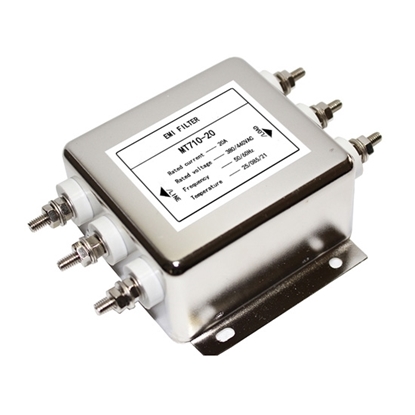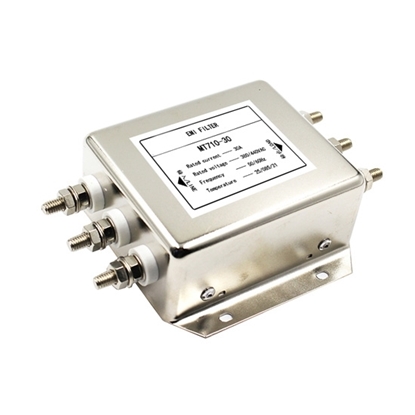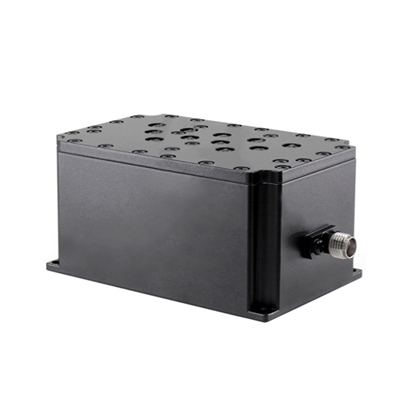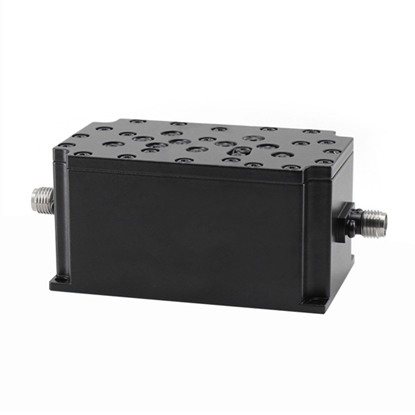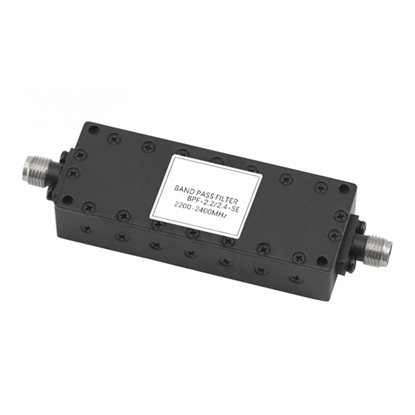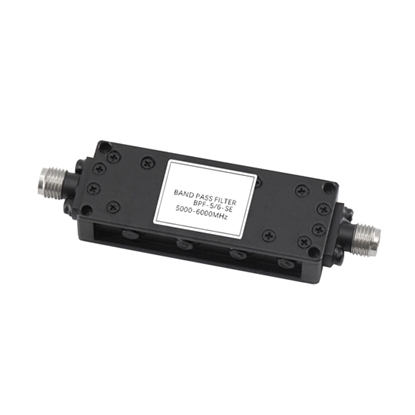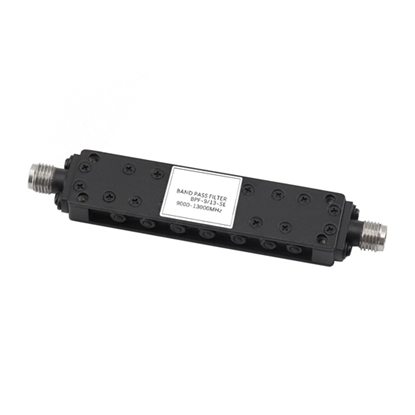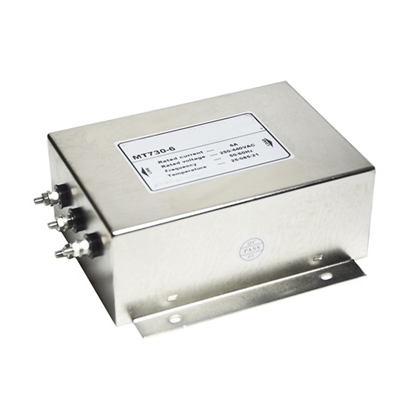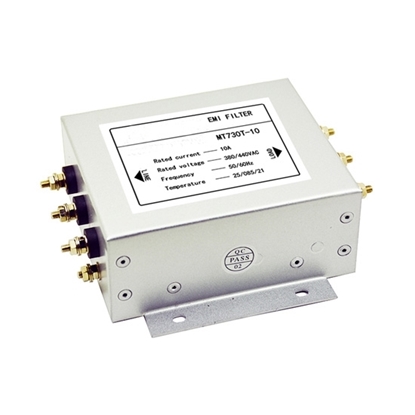Filters
EMI/RFI Power Line Filter 20A, 3 phase
EMI/RFI Power Line Filter 30A, 3 phase
Passive RF Bandpass Filter, 1165~1287 MHz
Passive RF Bandpass Filter, 1558~1592 MHz
Passive RF Bandpass Filter, 2.2~2.4 GHz
Passive RF Bandpass Filter, 5~6 GHz
Passive RF Bandpass Filter, 550~950 MHz
Passive RF Bandpass Filter, 6307 MHz
Passive RF Bandpass Filter, 9~13 GHz
Passive RF High Bandpass Filter, 1.5~6 GHz
EMC Input Filter for VFD, 10A/30A/50A/120A/200A to 1000A
EMC Output Filter for VFD, 6A/20A/80A/150A/300A to 1000A
A power line filter, also known as EMI/RFI power line filter, is an electronic passive device which is installed between the power line and the equipment in order to suppress electromagnetic interference (EMI) or radio frequency interference (RFI). Due to high attenuation performance, 1-phase and 3-phase EMI AC power line filters on ATO.com are good solutions for EMI suppression, which provide a reliable protection for a wide range of applications in the industrial areas. The current rating ranges from 1A, 10A, 20A, 40A to 100A. To achieve a higher performance in interference attenuation, 3-phase dual-stage EMI power line filters are also available here.
ATO EMC line filters for variable frequecny devices for sale now. The filters work on the input / output side of VFD, with current rating from 6A to 1000A and rated voltage 250V/440V AC 50Hz/60Hz. With low leakage current and high interference suppression capability, it is a best solution for protecting variable frequency drives, servo motors, and frequency converters and extend their service life.
Scroll down the page and select a high-performance line filter to protect your equipment or device from EMI/RFI/EMC.
What is Power Line Filter?
A power line filter, also called EMI power line filter, is a passive bi-directional network, electrical equipment which effectively filters the particular frequency point in the power line or the frequency out of the particular frequency point. Line filters are designed for electromagnetic interference (EMI) in the mains, and it is a frequency-selective two-port network usually composed of inductors, capacitors, resistors. Actually it is a kind of filters and can also be called reflection filter according the working principle. It provides high series impedance and low parallel impedance in the filter stop band, severely mismatching noise source and its impedance with load impedance, thus transmitting the undesired frequency components back to the noise source.
When selecting the power line filter, three main indicators should be considered: first is voltage and current, the following is insertion loss, and finally it is size and structure. Since the filter inside is typically potted, environment is not a main concern. However, the temperature characteristics of all potting materials and filter capacitors have some influence on the environmental characteristics of the power filter.
How does Power Line Filter Work?
The commonly-used filter circuits of power line filters have passive filtering and active filtering. The main forms of passive filtering are capacitive filtering, inductive filtering and complex filtering (including inverted L-type, LC filtering, LC π-type filtering and RC π-type filtering, etc.). The main form of active filtering is active RC filtering, also known as electronic filters. The magnitude of the ripple component in DC electricity is represented by the ripple coefficient S: the larger the value, the worse the filtering effect of the filter.
Ripple coefficient (S) = maximum value of fundamental wave of AC component of output voltage / DC component of output voltage
Power line filter's principle is an impedance adaption network: the larger the impedance mismatching between line filter input & output side and power & load side, the more effective the attenuation of electromagnetic interference (EMI). The specific working principle is as follows. After AC is rectified by diode, the direction is single, but the current intensity is still constantly changing. Generally, this ripple DC is not directly used to power supply. To make the ripple DC into a smooth waveform, one thing need to be done, that is filtering. In other words, the task of filters is to reduce the ripple in the output voltage of the rectifier as much as possible and transform it into near constant DC.
How to Select an EMI Power Line Filter?
- Rated voltage
Rated voltage is the working voltage of EMI power supply at specified power frequency, which is the maximum allowable voltage value of filter. If the input voltage of filter is too high, it may damage the capacitor inside. - Rated current
Rated current (Ir) is the maximum allowable continuous operating current at the rated voltage and specified ambient temperature.
Along with the ambient temperature rise, or operating temperature higher than indoor temperature due to inductive wire’s copper loss, magnetic core loss and ambient temperature, it is difficult to guarantee insertion loss performance. Therefore, the rated current of EMI power line filter should be selected according to the maximum operation current and ambient temperature possibly in the actual work.power line filter selection. - Insertion loss
Insertion loss is one of the most important technical parameters of EMI power filter. In the premise of ensuring the safety, environment, machinery and reliability of the filter to meet the requirements of the relevant standards, the insertion loss can be achieved as high as possible.
The other factor is operation temperature and rated current of filter. Since the inductive L of the line filter is made from ferrite or other magnetic materials, under large current operation, magnetic saturation state causes performance deterioration, which is much different from one at rated current in the test. - Operating environment
One of the main reasons affecting the operating current and environment relation is soft magnetism material in EMI line filter. EMI power line filter normally uses high permeability soft magnetism material, Mn-Zn ferrite, the initial permeability μi=7000~10000,but its Curie point temperature is not high, and high quality is around 130℃. The higher the permeability is, the lower the Curie point temperature is. The permeability drops down rapidly after the Curie point, then leading to inductive value drop down of EMI power filter, which seriously affects filtering effect.
Filter by:
Clear All
